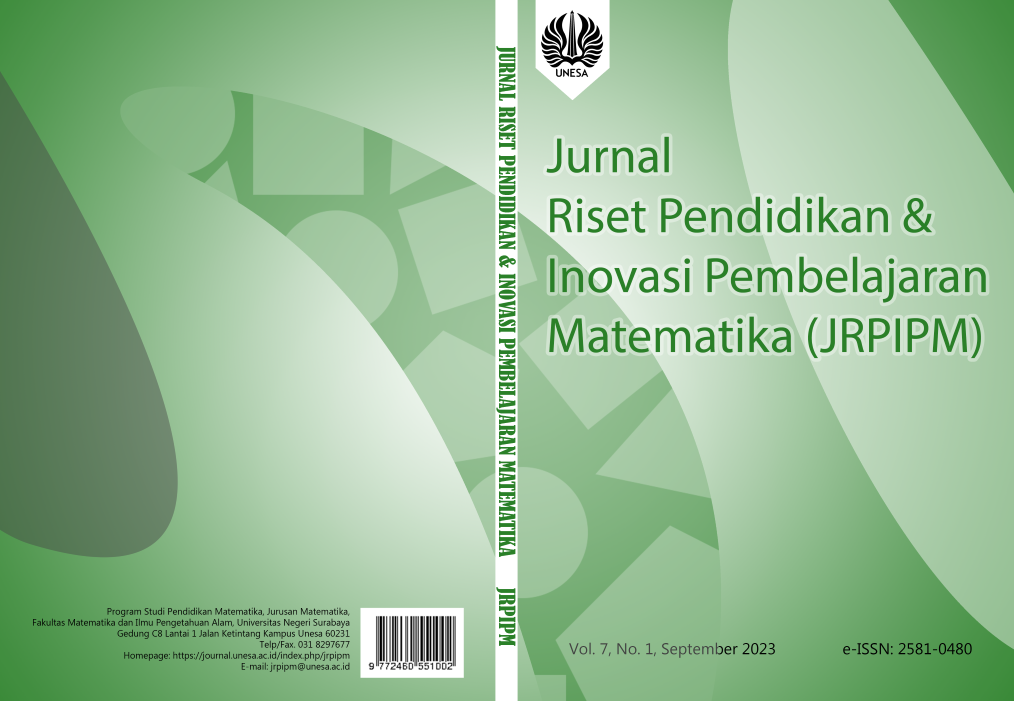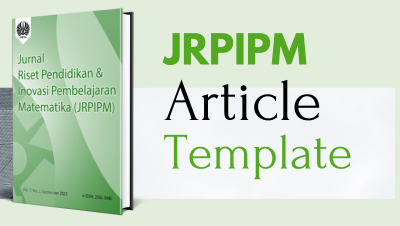Algebraic Thinking Profile of Junior High School Students with Reflective Cognitive Style in Solving Mathematics Problems
DOI:
https://doi.org/10.26740/jrpipm.v7n1.p75-84Keywords:
Algebraic Thinking, Problem-Solving, Reflective Cognitive Style.Abstract
The differences in algebraic thinking when solving problems are determined by the characteristics of students. One of the distinguishing characteristics is cognitive style. The study aimed to describe the algebraic thinking profile of students who had reflective cognitive styles in solving mathematics problems. This study used descriptive qualitative research with a case study research design, focusing on 8th grade junior high school students with reflective cognitive style. Data were collected using tests and interviews. This study used three types of tests namely Matching Familiar Figure Test (MFFT) to determine students’ cognitive style, Mathematics Ability Test (AMT) to measure students' mathematical abilities, and Problem-Solving Test (PST) to obtain data related to students’ algebraic thinking profile in solving mathematics problems. Data were analyzed in three stages covering data reduction, data presentation, and conclusion drawing. The results showed that the algebraic thinking of students with reflective cognitive style in solving problems met the three aspects of algebraic thinking indicators namely performing activities to generalize the pattern and determine the next term of the given pattern, representing and comparing data in tabular form, and understanding the meaning of variables and use variables in the form of letters or symbols as a representation of something unknown value in algebraic form. Students with a reflective cognitive style in solving problems could understand the problems given well, be careful and thorough in writing the steps of completion, and straightforward and coherent in answering questions so that the answers given tend to be correct. Thus, the results of this study are expected to be one of the references for teachers or other researchers in developing mathematics learning by considering the cognitive style the students, especially reflective cognitive style.
References
J. A. Van de Walle, K. Karp, and J. M. Bay-Williams, Elementary and Middle School Mathematics: Teaching Developmentally. Allyn & Bacon, 2010. [Online]. Available: https://books.google.co.id/books?id=w_zuAAAAMAAJ
Suharnan, Psikologi Kognitif. Surabaya: Srikandi, 2005.
R. R. Skemp, The Psychology of Learning Mathematics. in Pelican books. L. Erlbaum Associates, 1987. [Online]. Available: https://books.google.co.id/books?id=8WTZk8cCCNUC
Sugiyono, Metode Penelitian Kuantitatif Kualitatif dan R&D. Bandung: Alfabeta, 2013.
Downloads
Published
Versions
- 2023-12-08 (2)
- 2023-12-08 (1)
How to Cite
Issue
Section
 Abstract views: 445
,
Abstract views: 445
, PDF Downloads: 308
PDF Downloads: 308







